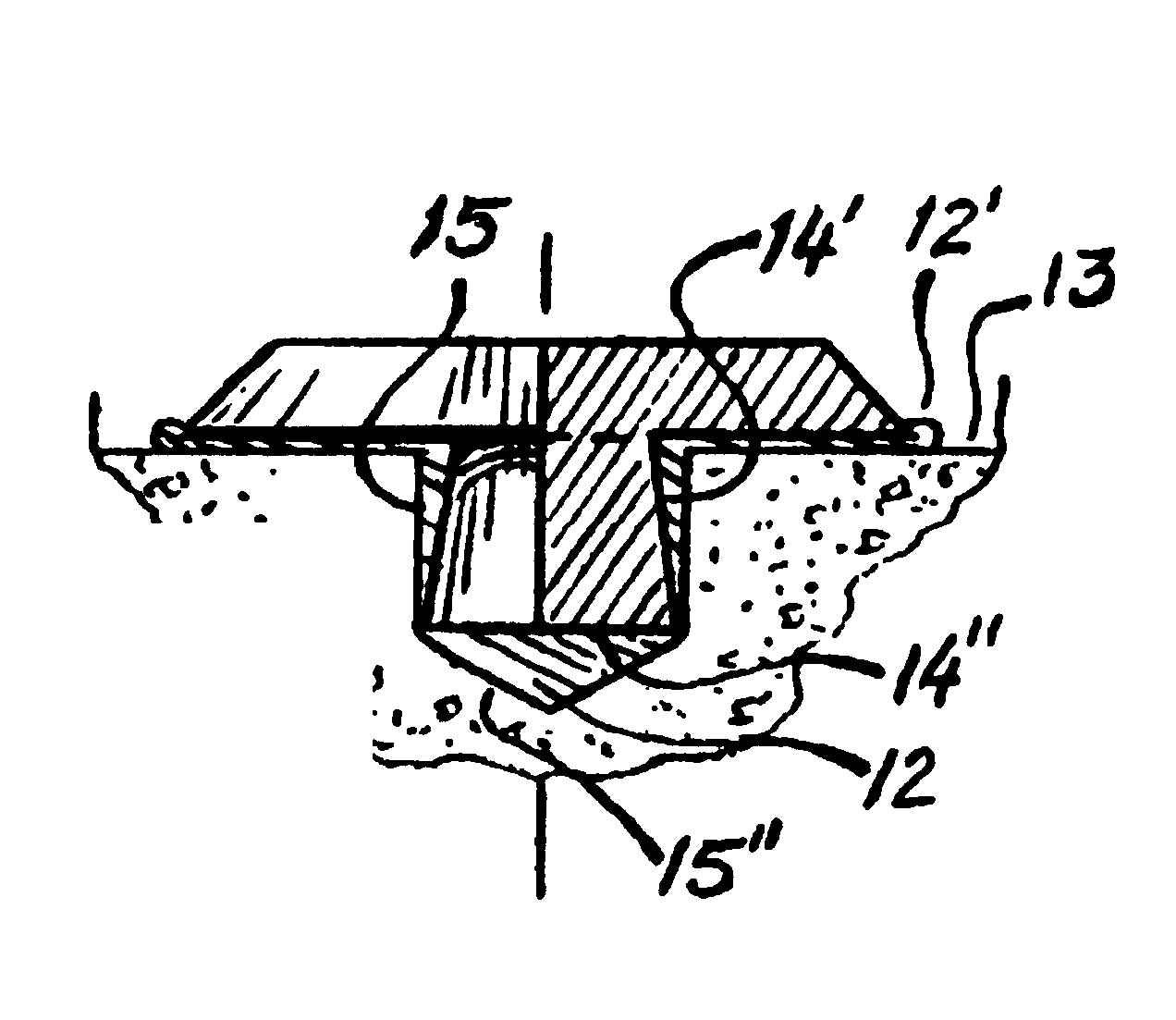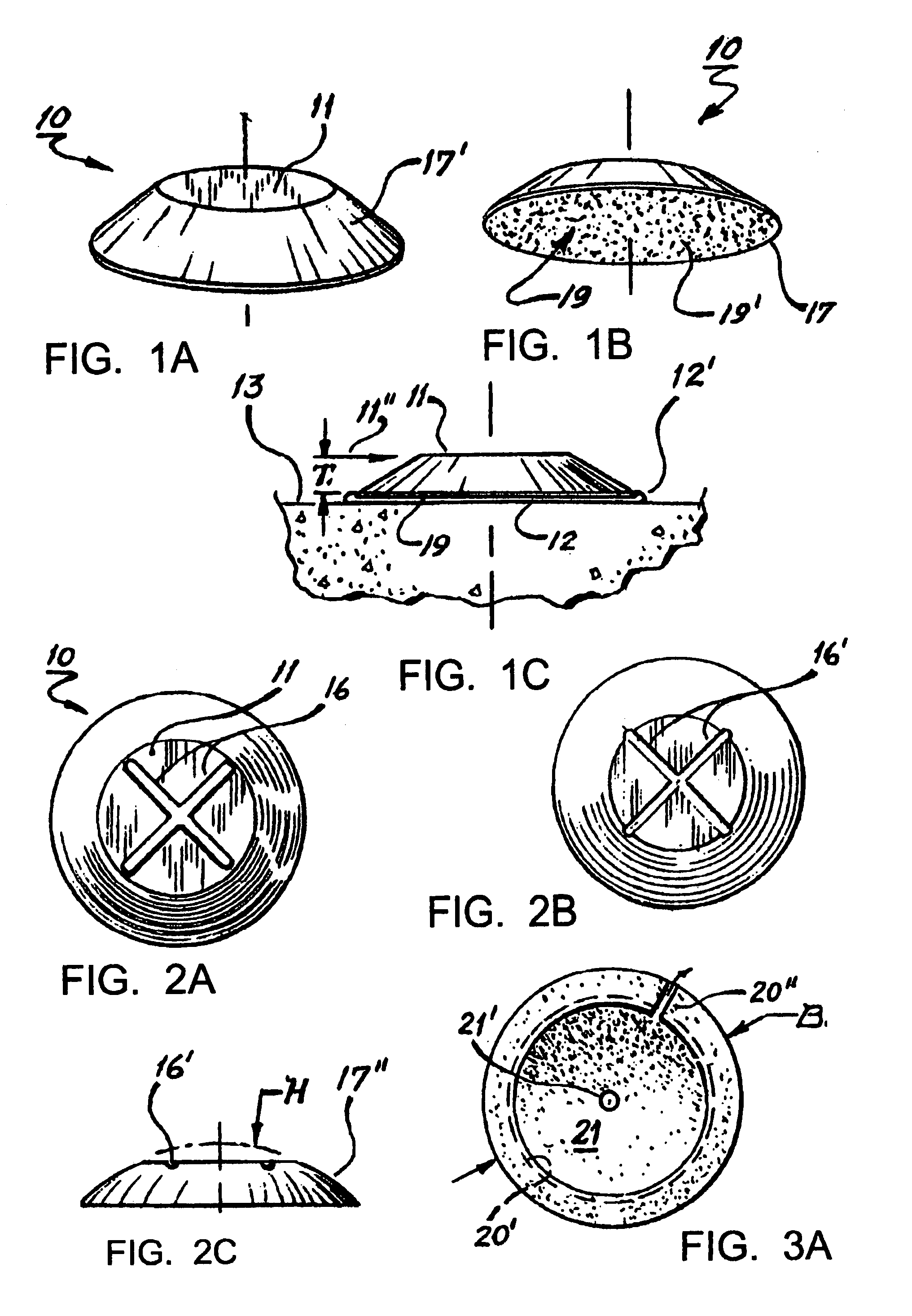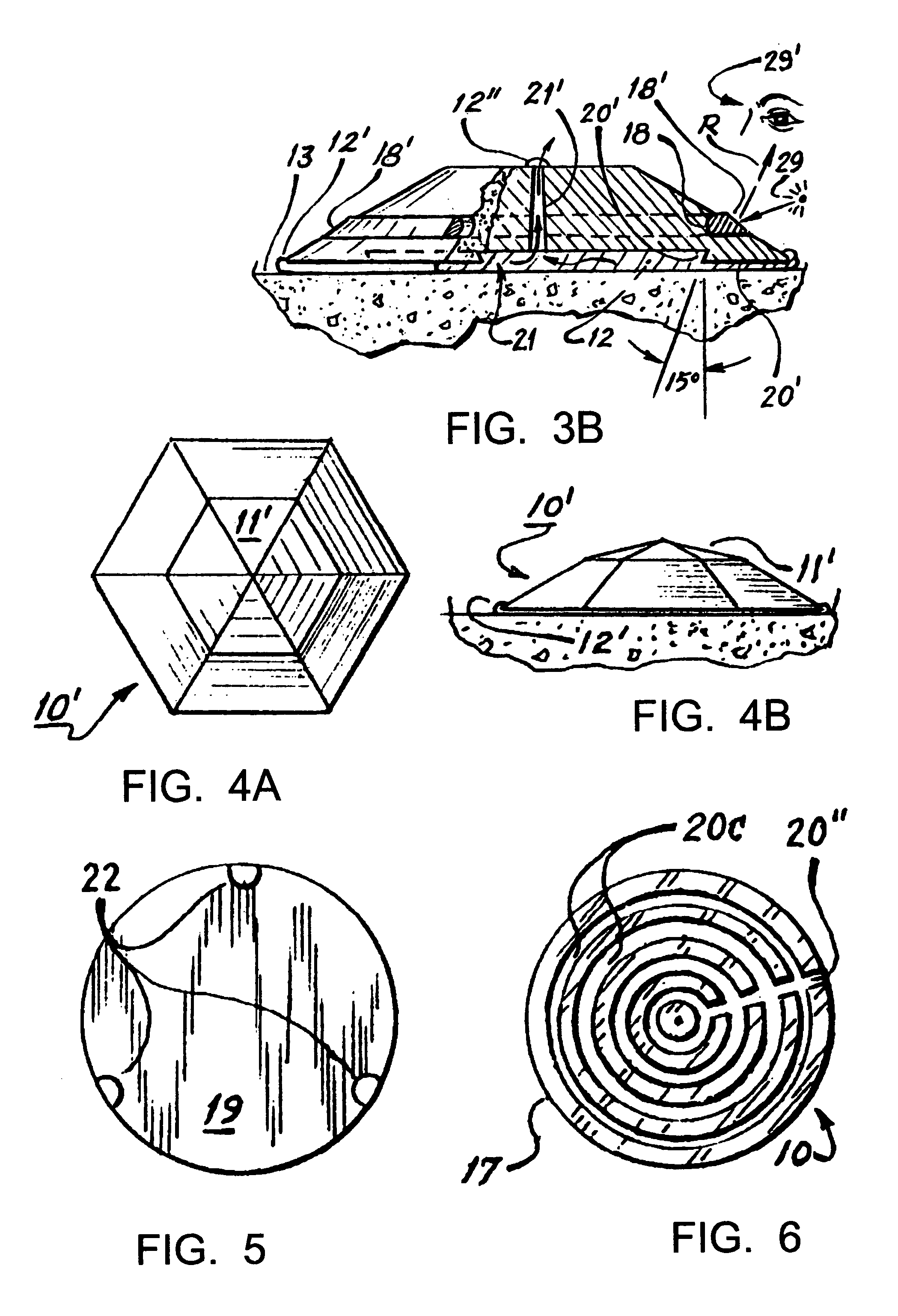Detectable warning-dots demarkation for pedestrian safety
a pedestrian and detection technology, applied in road signs, roads, constructions, etc., can solve problems such as not necessarily smoothly circular in plan-view, and achieve the effects of enhancing tenacity, improving pedestrian foot traction, and promoting bonding strength
- Summary
- Abstract
- Description
- Claims
- Application Information
AI Technical Summary
Benefits of technology
Problems solved by technology
Method used
Image
Examples
Embodiment Construction
[0021]The foregoing and still other objects of this invention will become fully apparent, along with various advantages and features of novelty residing in the present embodiments, from study of the following description of the generic species embodiments and study of the ensuing description of these embodiments. Wherein indicia of reference are shown to match a particular feature stated in the text, as well as the claims section annexed hereto; and accordingly, a better understanding of the invention and the variant uses is intended, by reference to the drawings, which are considered as primarily exemplary and not to be therefore construed as restrictive in nature; wherein:
[0022]FIG. 1A, is an pictorial-view favoring the top of my basic safety-button device;
[0023]FIG. 1B, is a lower-oblique pictorial-view showing the bottom side thereof;
[0024]FIG. 1C, is a side / elevation-view thereof;
[0025]FIG. 2A, is a top / plan-view thereof, showing an anti-slip provision;
[0026]FIG. 2B, is a alter...
PUM
 Login to View More
Login to View More Abstract
Description
Claims
Application Information
 Login to View More
Login to View More - R&D
- Intellectual Property
- Life Sciences
- Materials
- Tech Scout
- Unparalleled Data Quality
- Higher Quality Content
- 60% Fewer Hallucinations
Browse by: Latest US Patents, China's latest patents, Technical Efficacy Thesaurus, Application Domain, Technology Topic, Popular Technical Reports.
© 2025 PatSnap. All rights reserved.Legal|Privacy policy|Modern Slavery Act Transparency Statement|Sitemap|About US| Contact US: help@patsnap.com



